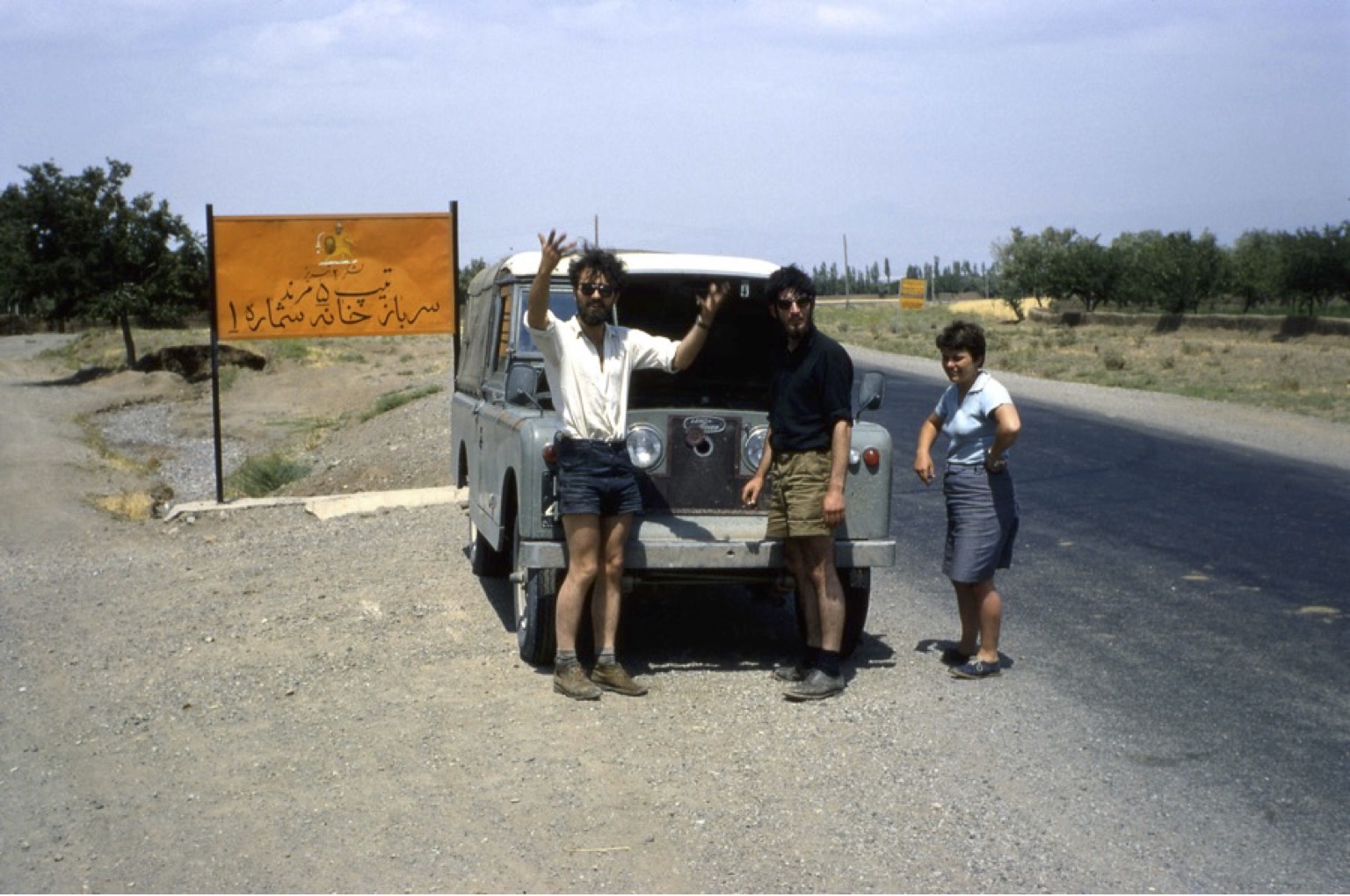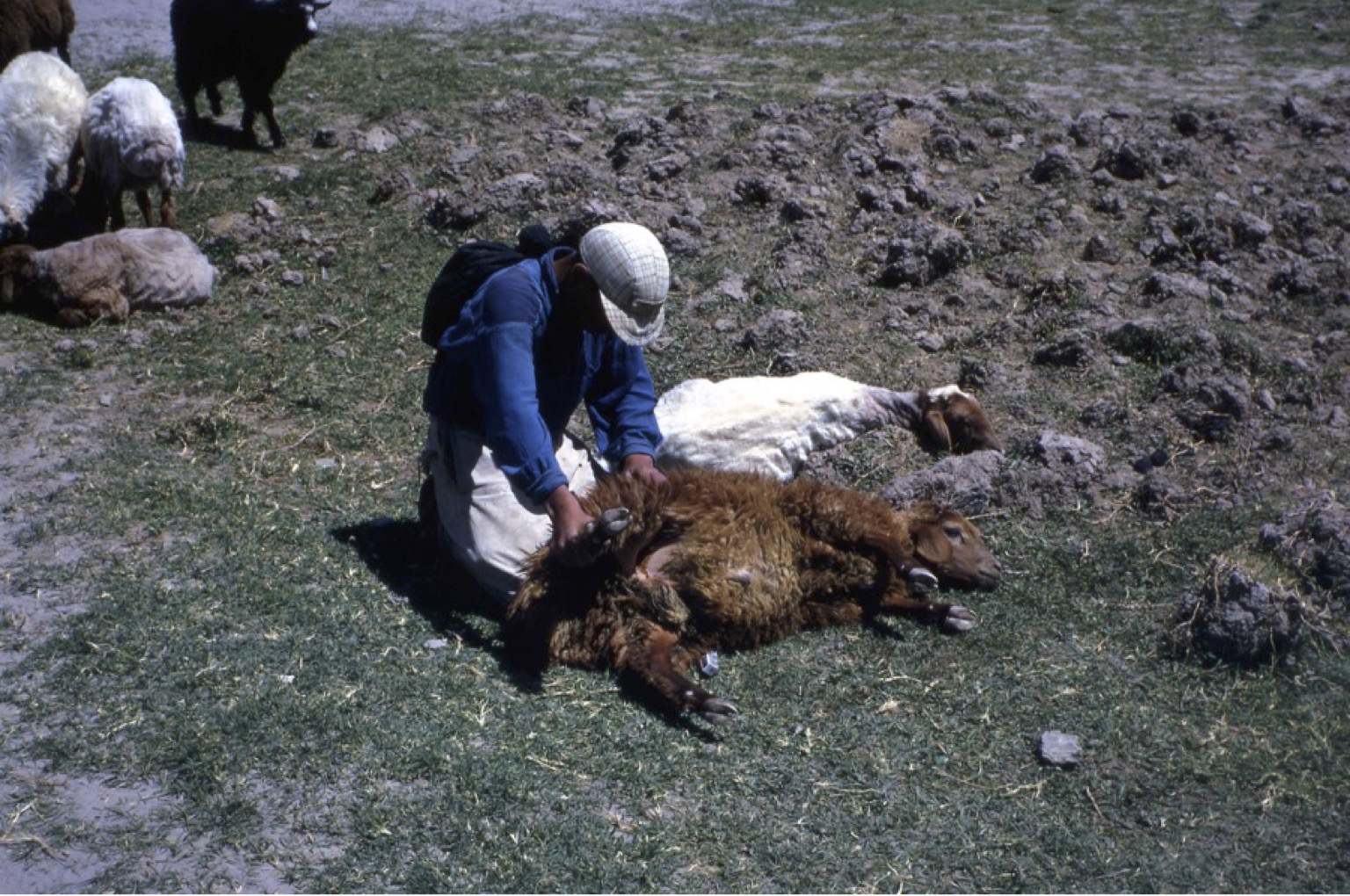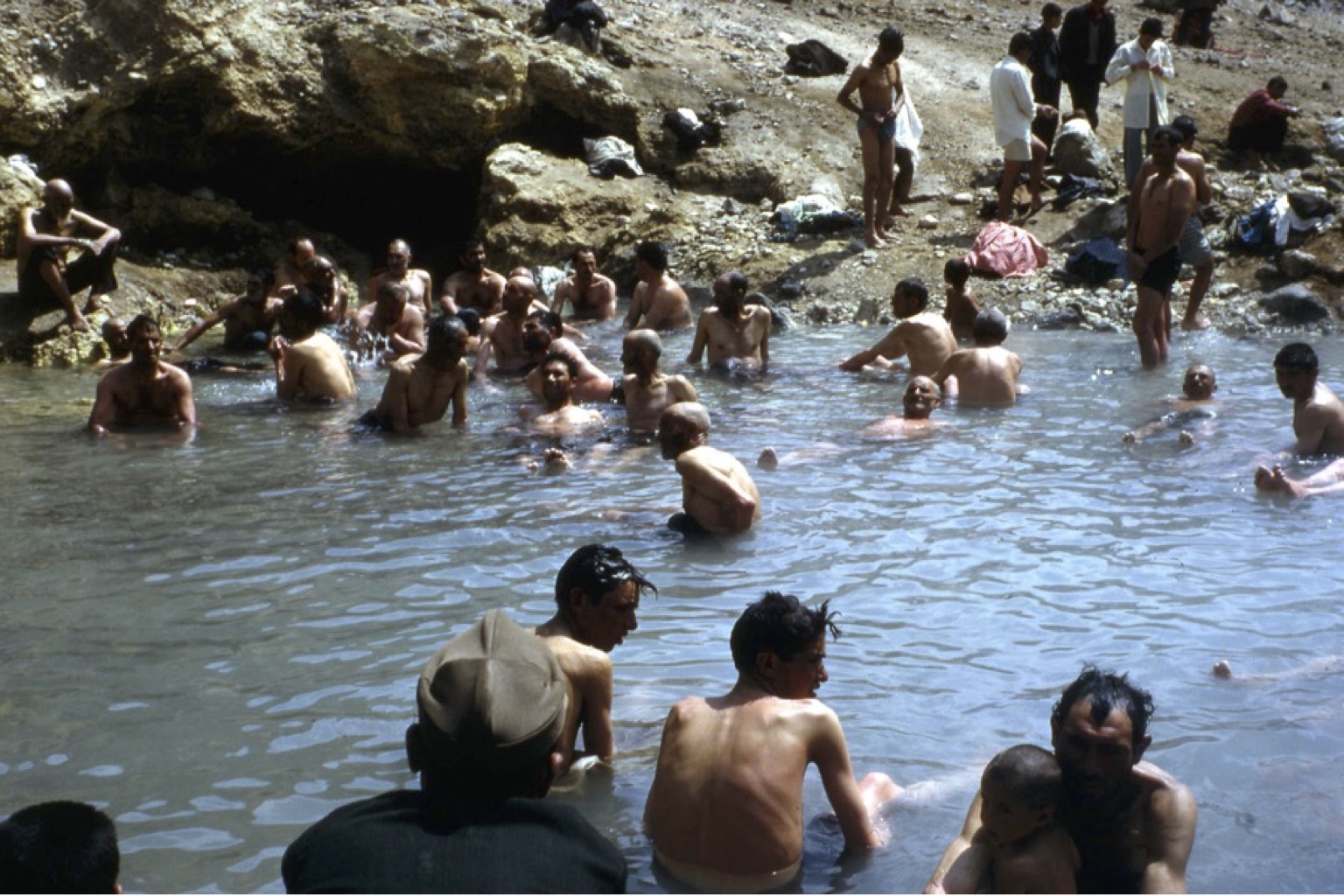In 1967 the Biology students organised an expedition to collect hard ticks (Acarina: Ixodidae) from domesticated (and hopefully also, wild) animals for Allan Campbell’s work on tick systematics. Iran, although part of the Palaearctic zoogeographical region, was of particular interest, because fauna from the Oriental region sometimes occurred in that area. In those days, ‘official’ University expeditions had to have an accompanying member of staff: this is how I became involved, being considered young and energetic, and with an interest and experience in Arthropod Parasitology.

Into Iran, 1967
We travelled overland in two Land Rovers, taking nearly three weeks to get to Iran. Most of the overnights stops were in camp sites, although we increasingly used small hotels the further east we travelled. Our journey took us down to Dover, and then across northern France, Belgium and Germany to Munich where we stopped for a day’s rest (and to sample the beer). We then continued via Austria, into Yugoslavia through Maribor, Zagreb and Belgrade, over to Sofia and down through Plovdiv to Istanbul. We spent another day recuperating in Istanbul before crossing the Bosporos to Asia Minor. Traversing Turkey took five days, through Ankara, up to the Black Sea at Samsun and Trabzond, and then inland again to Erzurum, Agri and, close to Mount Ararat, to the Iranian border. Within Iran we camped at Tabriz and stayed at a small local hotel in Qazvin before reaching Teheran. Our base in the Iranian capital was the University Veterinary School, and two local veterinary officers were seconded to us, ostensibly to help collect ticks and to act as interpreters in our dealings with the local herdsmen. However, it turned out that they could not speak the Turkic language spoken by most of the people in our collecting area, found our style of camping ‘too hard’, and disappeared back to the creature comforts of Teheran after the first week. But in their absence we found we could cope – the locals were very helpful in handling their livestock since they thought that we must be from a government ministry! However, most of our specimens were collected from fairly docile animals such as sheep, goats, dogs and donkeys. We were not happy collecting ticks from camels, and very few ‘wild’ animals came our way. Nevertheless, the ticks we collected were brought back to Edinburgh, welcomed by Allan, and became useful additions to his extensive collection.

Collecting Ticks in Iran
Several excursions were made to sites of zoological and historical interest. On one trip we drove up through Ardebil to the Caspian coast as far as Astara on the Soviet (Azerbaijan) border. On this trip we were directed to a ‘skin treatment centre’ high in the mountains, thinking that it might be a place where livestock were treated, and hence a possible source of ticks. We found, however, that it was a local ‘spa’. Men and women took to the hot springs on alternate days. Luckily, for the men in our party, the day we arrived was men’s day and we joined them to have our dermal ailments healed.

Savalan Hot Springs, “Skin Treatment Centre”
On another tick-hunting trip we went to the salt lakes to the west of Tabriz. We bathed (or rather floated on the surface) of one of these lakes and were greeted by a local with a bucket of clean water when we emerged. The best trip, however, was south through Sanandaj and Hamadan to Isfahan and Shiraz, visiting Persepolis and the other major archaeological sites. We camped in the mountains above Shiraz and awoke one morning to the sounds of animal bells as what must have been the entire Bahktiari tribe was moving its animals from their high summer grazing to lower areas close to the Persian Gulf. This migration lasted a full day or more. We also met up with an expedition from Oxford University and were invited to a truly memorable feast of stewed mutton (but not the eyes!) served to us in a tent and eaten with our hands. At the end of my six-week spell with the expedition, I left the others to their labours, and returned from Teheran to Edinburgh by air, stopping briefly at Beirut, but with insufficient time to see my friend Zahi.

At Persepolis
